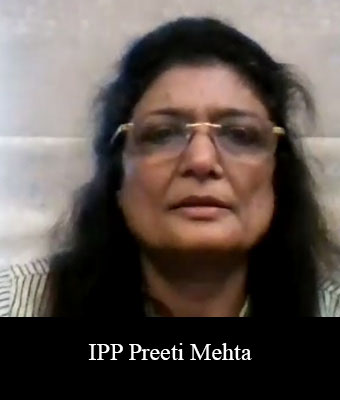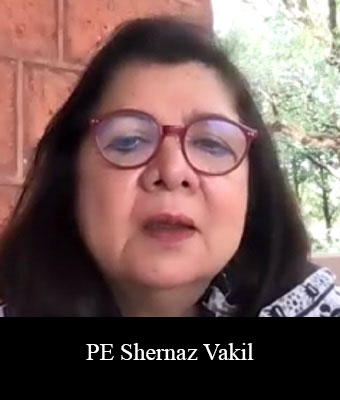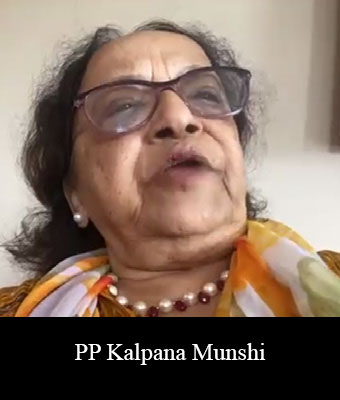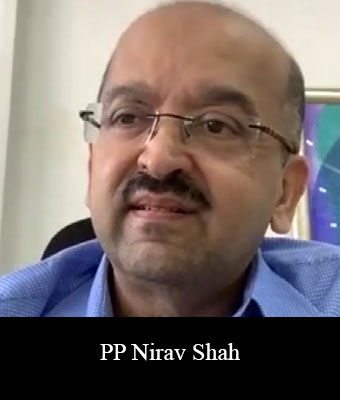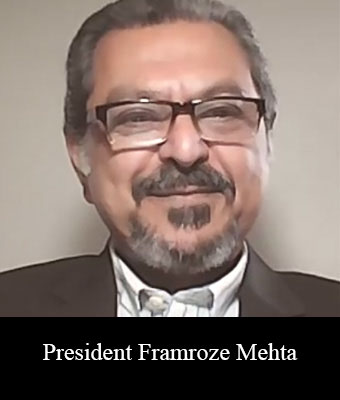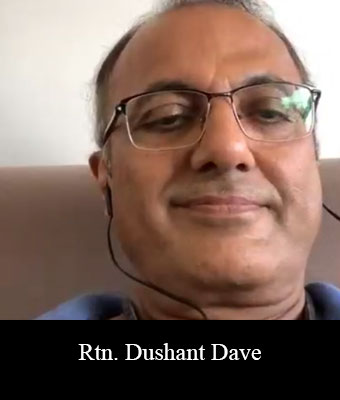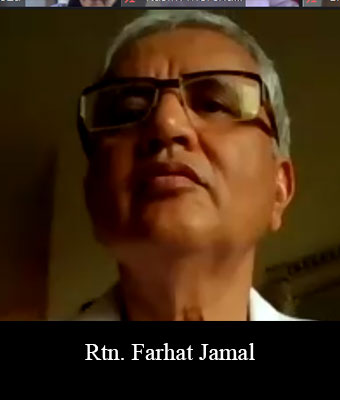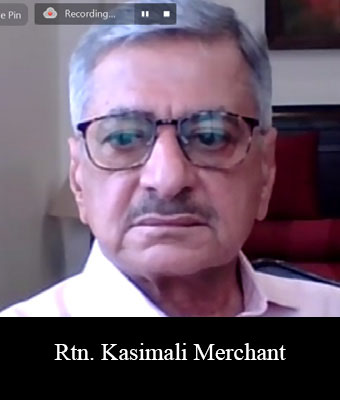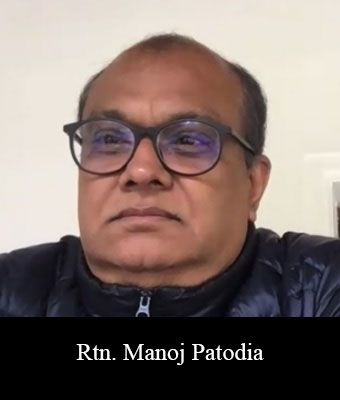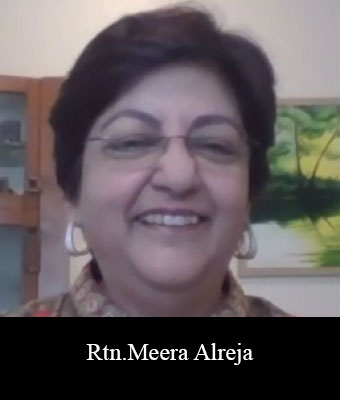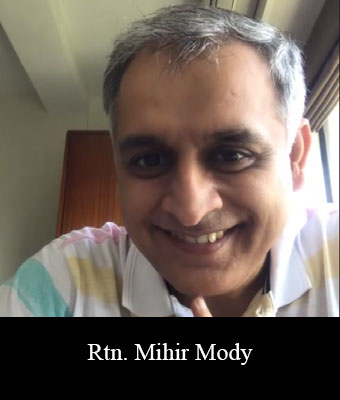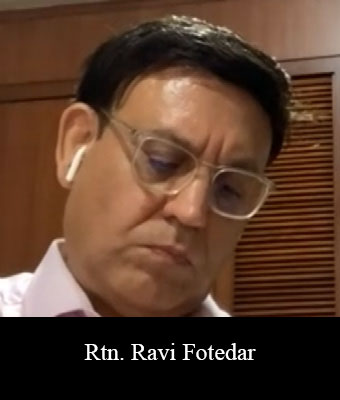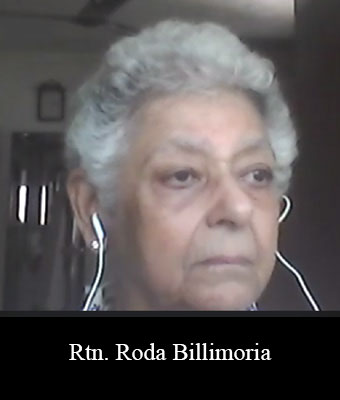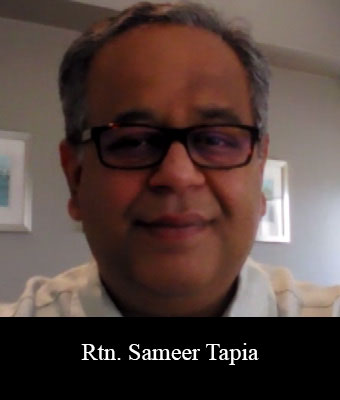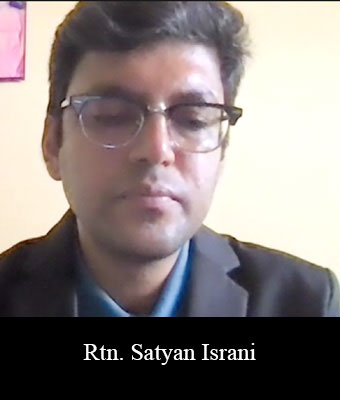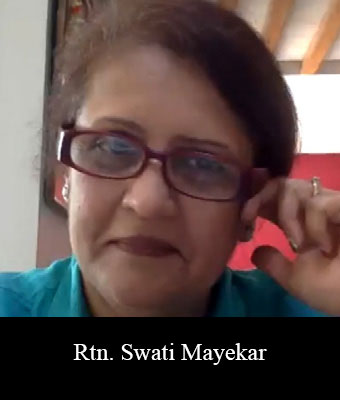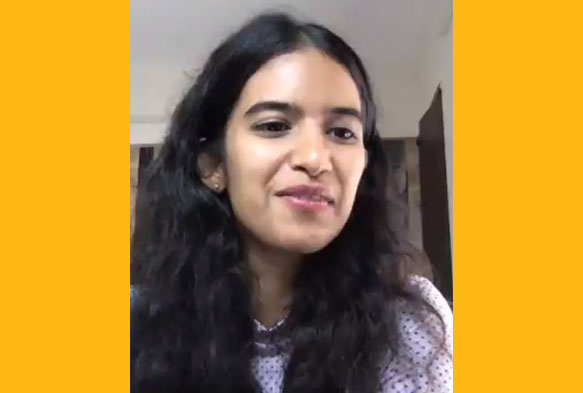
Prachi Shevgaonkar, Founder Of Cool The Globe App, Recepient Of The Taru Lalvani Award For Environment Protection, Talks About Climate Change
MY FIRST MEMORY IS OF LEARNING ABOUT ENVIRONMENT AND CLIMATE CHANGE IN SCHOOLS THROUGH LECTURES AND TEXTBOOKS. EVERY TIME THERE WAS A LECTURE ABOUT ENVIRONMENT, I ALWAYS CLOSED MY EYES AND THOUGHT WHAT A BORING LECTURE AND I AM SURE THAT IS WHAT MOST OF US THINK. SO, IN THE INTEREST OF NOT MAKING IT BORING, WE ARE JUST GOING TO TALK ABOUT TWO QUESTIONS. THE FIRST, IS SOMETHING I ASKED MYSELF WHEN I ENTERED COLLEGE.
I remember Googling what is the biggest problem in the world today? And climate change popped up. I was surprised because, at that time, all global institutions seemed to be saying that climate changing is the most challenging and pressing issue facing the world but no one around me was talking about it. I asked myself why I should care about climate change? I had just entered college, I had a lot on my plate so why should I care about ice melting in some other corner of the world. To answer this question, the second obvious question was what is climate change? I would love to hear from all of you.
Some answers by Rotarians:
- Global warming and greeneries getting reduced.
- Melting glaciers, increase in sea levels creating differences in sea temperatures, flooding in some places.
- Disturbance in balance of nature.
- Extinction of many species.
It is good to know that all of you know a lot about climate change and also the effects of that; I didn’t, at that time. To my understanding of what climate change is, the most basic thing is climate change today is 1-degree Celsius. We live in a 1-degree Celsius world today which means that the average temperature of the world has increased by almost one-degree more than pre-industrial times. Honestly, it doesn’t seem much but the more we keep going it is going to keep increasing to 2 degrees, 3, 4 and hopefully the aim is to stop it before it becomes irreversible problem. Essentially what climate change is right now that the average world temperature is increased by 1-degree Celsius.
So, who are the villains in this story? It is the green-house gases, carbon dioxide, nitrous oxide, methane and I want you to remember these names because they are the ones trapping the heat in the atmosphere and increasing the temperature of earth. As you can see, carbon dioxide is their leader, the main villain. But I think these people are being framed, I don’t think they are the real villains, I think they are pulling the triggers but someone else is holding the gun. So, who are the real villains in the story? It is us!
Humans, in everything that we do today, we grow things, we build things, we travel to places, we make things, we buy things and all of those emit green-house gases. Green houses are also crucial to our survival; without them, civilisation wouldn’t thrive, and greenery wouldn’t grow; the earth would be too cold for us to exist but like my grandmother says, ‘Too much of anything is bad’. So, what happened here is that leaves started emitting so much carbon dioxide and green-house gases that the earth now has almost double the times of carbon dioxide that it needs. In 1790, pre-industrial time, it was 280 parts per million of carbon dioxide and that is how much the earth needs and today we have 416 ppm and that is the highest level of carbon dioxide in 40 years.
What is that leading to? Extreme weather events are becoming more frequent and intense, flooding, wild-fire, storms, sea-level rise, if you see the newspaper some people say that Mumbai might go under water, some places like Maldives may be completely submerged, changes in the monsoon patterns. One of the biggest impacts of climate changes is that the Indian monsoon, they say, may not be there, it is under threat. Ice is melting, glaciers are melting, a glacier size of Mumbai is cut-off, loss of bio-diversity. So, after hearing all of this I would like to ask, do you care about climate change? Have you got the answer to the question?
Of course we do, we have to. Every one says ‘yes’
But we are not willing to change our lifestyle, that is the problem. [Rtn. Mudit Jain]
Right! You just said it! When I first heard about the impact of climate change, I thought it was bad and terrible but then I had a moment with myself and I thought I don’t really care about it that much. I want somebody to think about this, but I don’t care about it enough to make changes in my life.
I have a limited threshold of things I want to do and ice melting is some other corner of the world, sea level rising is not going to be one of the things I care about. I have enough on my plate. That is what I thought. Then, once I thought I don’t really care about this, the second question that emerged was what do I truly care about as an ordinary person in day-to-day life, if I forget about climate change, what are the things to care about? That is something I want to ask you as well.
Our daily living, we are so busy with ourselves, we are just thinking of the lifestyle and daily routine.
I am worried about the species that we are going to lose.
You are very ahead of all of us sir, very learned to care about species. I was not at that time, not enough to care about them. So, I asked myself what are the things I truly care about? And the answers were food, health, our homes and family, our livelihood and income and, if time permits, Indian politics. There are a handful of things that every person in India cares about. That reminds me of a quote from Stalin, I know he was a dictator, but there is a jarring truth behind it: ‘One death is a tragedy but a thousand deaths, that is just a number.’
So, let’s forget about climate change and these big dry words and let’s look at five individual faces behind the catastrophic effects of climate change. I am going to tell you about a few people I met, the first of them is a 12-year-old boy I met when I was making a film about children in slum areas and what their dreams look like. The day I met him, I asked him a simple question, if you could get anything you want in the world, if you have one wish, what would it be? I’ll never forget what he said, he said, ‘I wish my house didn’t get filled with water every year. And that was a jarring thing for me because a 12-year-boy can ask anything in the world and he has to ask for something as basic as safe shelter.
I realised that he is not alone, every year, 10 million people are forced out of their homes due to climate change. As the weather becomes more extreme, more people have to be away from their homes. More young boys like him have to worry about something as basic as shelter and I realised that I do care about this.
The second person I would like to talk about is an intelligent, young girl I met when I was working with an NGO on education. I met her around the time of drought; the Khadakwasla dam had dried up and water was being used scarcely throughout the city. I asked her which standard she was in and she said she had not been going to school lately. When I asked why, she replied that her house got water for just two hours in the afternoon and nobody else in the house could afford to stay home at that time. So, she had to skip school to be at home to do it and I realised that she is not alone. Climate change impacts our water. It means that less and less people get access to clean and sanitized water, it means that bright young girls like her have to stay home, quit education so that they can fill buckets of water and, I realised, this I do care about!
The third is one of the most inspiring women I have met; when I met her, she was around the same age as me. I was working with a community of waste workers in Bangalore and she had come from Bangladesh. She was 18 but she was already married and she had a small daughter. The day I met her, I walked 5 km with her to get to the nearest school district. We walked to the school, she sat at the doorstep of the school and demanded that her daughter be admitted in to the school but they couldn’t do it because her daughter didn’t know the language [Kannada] and she didn’t have the necessary documents to get admitted to the school. But this lady didn’t give up. For the next one month, every morning she walked to the school, she sat at the doorstep and she refused to leave until they found a place for her daughter in the school and finally the school found a way around the technicalities, language barriers and her daughter got admission. Now what does this have to do with climate change? Let us talk about millions of climate refugees who have to leave their homes due to weather uncertainties and extremities, there are millions of young girls like her who must have had to flee their homes and start their lives. This, I do care about.
The fourth person is someone we are all associated with, that is the farmer. I spent some months with a community of farmers, Abhinav Farmers Club and it was group of farmers which rooted for group farming initiatives together and during my months with them, I met so many farmers with one-acre lands who said that they could not afford to farm anymore because the weather was not reliable. Lots of farmers were selling their land and coming to the cities. This is a story we have all heard but I remember one conversation I had with a 75-year-old man who taught me more about the climate change than any other report. He said when a farmer like me can’t afford to produce food, there are millions in India who can’t afford to buy food. So, climate change means more people go hungry and this, I care about.
I realised that I don’t care about climate change because of the heavy words like erosion and biodiversity, it is not about the statistics, it is not about the news that we read, I care about climate change because it impacts my food, it affects my home, it impacts my health, my livelihood and lastly it affects the people that I care about. As soon as I learnt the answer to my first question, why should I care about climate change, only then did I start with the second question which was, ‘What can I do about climate change?’
Before we start discussing that I think it is important to understand why now? What is the urgency? And for that I would like you all to remember two numbers: 51 billion and zero. 51 billion tonne of greenhouse emissions are what we globally are emitting and we want to get to zero in the next 30 years. For that we can imagine the earth as a bath tub and the emissions as a small tap and we emit 51 billion tons of emissions every year. And the reports vary but all of them are certain that we have to do this change in the next 30 years, if we don’t then the climate change is something that we can’t come back from. We cannot reverse the worst effects of climate change then.
In order to do that we have some goals in front of us, it is important for ordinary people like us to know them as well. They are – to limit the temperature rise to 1.5 Degree Celsius and become completely carbon neutral by 2030, reach zero green house emissions by 2050.
[Showing a graph] Now there are two scenarios to play these out. The first is the sustainable development scenario that is the ideal scenario of being carbon neutral by 2050 and the second scenario is Stated Policies Scenario which is what will happen if the government and the leaders do what they have committed to do and it is nearly not enough. By following this scenario, we end up increasing the gas emissions by a margin. So, there is something wrong in the picture that we are missing. What is it? PEOPLE.
If you see all the biggest transformations in history are made by people and not by governments or policymakers or legislators. As ordinary people we often forget the power that we hold, when people come together to take action. And that is why it is so important for us to take action on climate change. To not just talk about it but to decide to come together and do something.
So, once I realised that I wanted to do something it, there was still a question of what I could do. Climate change seemed a problem that was beyond me, what can an 18-year-old do about sea-level rise and loss of biodiversity? So, I did what any girl does when she faces problems, I asked my parents what we can do for climate change today. We decided as a family to reduce our greenhouse gas emissions by 10 per cent every year. We looked into our activities that may release green house gas emissions and how to decline them. We began to track and measure our impact and two strange things started to happen when we did that.
It was fun and I was not expecting that. Climate change was negative and an overall pessimistic experience but once I started taking action in my day-to-day life it became a positive empowering experience with my family.
So many people came to me and said that I want to do this with you and this is another thing I wasn’t expecting because you are always used to hearing that people want to talk but they don’t want to do. But I found people wanted to join me and that was surprising.
So, I started to look out more frameworks to help ordinary people to come together and do something about climate change and to my surprise there were none. So, from this, Cool the Globe was formed. We saw global institutions around the world emphasise on individual action. Our PM, when we spoke at the climate conference, he spoke about making sustainability and climate action as a part of our life and everyone was talking about it but there was no easy way to measure or quantify this.
So, we decided to build an app which would help individuals reduce their own green-house gas emissions to a target and that is how Cool the Globe was formed. Throughout my college years we learnt how to build this app. We did research, coding, spoke to so many individuals, experts, entrepreneurs, app coders and with the efforts of many people, this app came alive around the same time that I graduated from the college and when it did come alive we realised that our work was nearly not done.
The main work was in convincing people that they can make a difference in the face of climate change. So, we decided to talk about it and we made a small video just talking about what the app is, what is does and what the power of climate action is.
Surprisingly, people that shared the video with their friends, their friends then shared with their friends and before we knew it millions were talking about this campaign. We received messages from leaders, entrepreneurs, policy makers and all the important people but what touched my heart the most was the calls and messages I got from all the ordinary people.
A nine-year-old girl emailed me saying, I don’t have a phone yet but I still want to do something. So, I am asking you what can I do in my life about climate change and she had understood a simple thing that many adults often don’t and that is action matters a lot more than words. Then an 18-year-old woman called and said that I don’t get out of my house much but I leave my lights on in the afternoon and I am going to stop doing that and that would be my contribution to this movement. We had a person who purchased a cycle and he said I am going to start going to my office on a cycle now and in the app I can see how many emissions I am saving by doing that and that is encouraging me all the more to keep on the journey.
There was a person who translated all of our videos in to Hindi so more and more people could understand it. This kind of grassroot action from citizens was completely unexpected but also so hopeful and empowering that people today are willing to come together to do something about climate change.
So, as soon as you enter Cool the Globe app to do anything at all, you need to do two things – quantify your impact and your needs to set targets/goals for yourself. As soon as you get in the app everyone gets a monthly target to reduce greenhouse gas emissions. So, a person living in India will get a target of reducing 30 kg of greenhouse gas emissions and then they see how they can do the same in different areas through simple actions.
The three key areas that lead to climate change are transport, building and industry. So, we try to translate that individually. Travel that we do, if a person can go to office which is say 10 km away by cycle rather than car, then they are saving 2 kg of greenhouse gas emissions. So, many people are working from home, by doing that we are saving so much emission. Second area is what we do at home, especially in summers, it is so hot and we want to switch on the ACs and it is okay to do it sometimes but if I don’t use the AC for five hours that means I am saving almost 6 kg of CO2 emissions.
Everything we buy has embodied energy attached to it, so, if I don’t buy two sarees that will be about 1 kg in weight, that means I am saving almost 10 kg of CO2 emissions. If I postpone the purchase of a car by one year, that means I am saving 1000 kg of CO2 emissions and what happens is that when we see these impacts, it encourages us all the more to keep going.
One question that we often get asked is what can one individual do? But I think when there are so many individuals coming together to do the same thing then the collective impact can be extraordinary and to show the power of this collective impact, we have a global meter on the page of this app. It shows us the savings made by all app users combined. That is essentially the Cool the Globe app but it is lot more than that because from grassroot action to citizen-led movement climate action, that has been our journey. It is grown into small projects and talks about how climate change is impacting the people and the people asking about what they can do about it. That kind of grassroot citizen action is so powerful and I think it gives us a hope to solve a problem as big as climate change.
So, what can you do about climate change?
First, reduce your own GHG emissions by 10% and it is not a lot. We always start with something that is convenient and easy. Actions matter a lot more than words; it is important to start somewhere.
Second, support projects, I don’t have to convince you to do this, most people in Rotary today are already in position to make a difference and already have done so much. Cool the Globe itself has many projects coming up that explains climate change and how it affects the day-to-day life and how people can do something about it through their actions. You can always be involved.
Third, lend your expertise. Find a way to support this movement. There will always be a way to make difference by using your expertise. Fourth, for anything to grow, you need resources and funds. And it is always a great way to scale up. Right now, we have completely organic action from citizens and people and the onus is to scale up this growing movement. Giving resources and fund is a great way to be involved.
Fifth, we are now appointing CTG advocates and mentors. We have asked a lot of young people who want to do something about climate change and the more people there are, there is a great power with one person talking about this with 10 or their acquaintances. So, there is a great power in becoming a mentor to young citizens.
Sixth thing that I want to ask you today, that is the biggest thing, that is advice from all of you. So, how can we grow from this point? How can we grow sustainably and how can we reach our target by bringing climate action through common man and through enterprise?
ROTARIANS SPEAK
Suggestion by Rotarian: What you are doing is amazing and what you can do is what you should do rather than talk big. So, if you can add cost economics into your app, it can help. For example, when you put off the AC for 5 hours, you save Rs.100 or so, that would put more people to become more climate conscious.
Question by Rotarian: Is climate change reversible?
No, it is not. All the emissions that we put out in the atmosphere we can’t take it back. It stays in the atmosphere for 100s and 1000s of years, millions in fact which is why we have 30 years left. Right now, even if we start doing something, it is not going to minimize what we have done. We take action today to avoid the worst effects of climate change and avoid coming to a point from which we cannot return but it is not irreversible which is why it is a pressing problem.
Should you not be taking to schools and colleges to start young?
Yes, we are taking sessions in schools and colleges.
Suggestion: As an architect, there is a lot we can do to reduce the carbon footprints but can we Rotarians be advocates by trying to push for systemic change? We have people in high positions who could request change on a systemic level to change government policies.
Absolutely. The reason we push for individual action is so that it creates a ripple to lead to the systemic changes. And this is what we need.
Besides this, I was under the impression that livestock creates the highest amount of carbon foot prints but I understand that eating fish or being a part of fish industry creates the maximum amount of oxygen.
Absolutely. We are trying to bring that to our lives. If we know that eating fish plays a big part in climate change, we try to find out if I eat one plate of fish what would that lead to? So, for instance 4 plates a month, in the app it will say that you emit 2 kgs of emissions. So, the amount of weight you eat, you emit twice the amount of CO2 and that is the impact we have on climate change.

